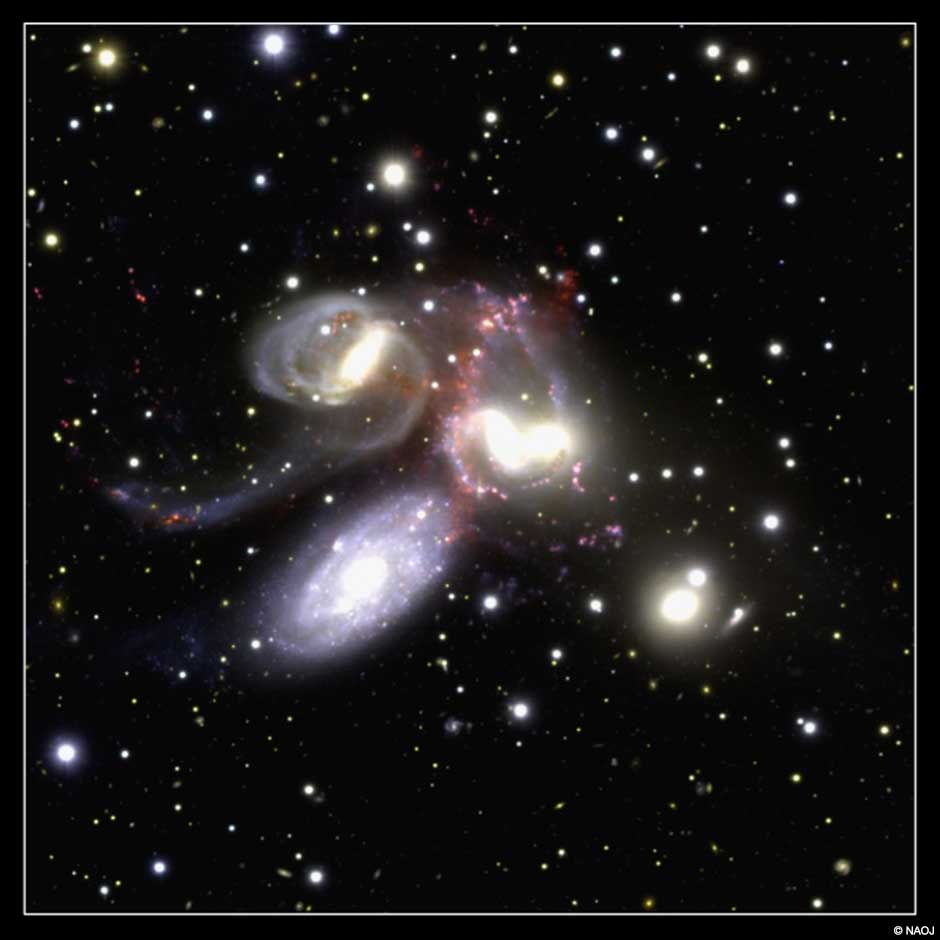A Galaxy Group Evolving 300 Million Light-Years Away
Astrophotography・

In the Universe there are countless galaxies, collections of stars, such as the Milky Way Galaxy in which we live. These galaxies do not exist in isolation from each other. There are galaxy clusters where many galaxies are concentrated and galaxy groups were a few galaxies are concentrated. The picture above shows Hickson Compact Group 92 (also known as Stephan’s Quintet), an example of a compact group where the galaxies have gathered into a particularly small area. We can see that the mutual gravity between the galaxies is pulling gas and stars out of them, and that new stars are being formed in this gas.
Galaxies and Dust Evolving Through Interaction
Among the large, bright galaxies captured in this image, all of them except the bluish-white spiral galaxy in the lower left are members of a compact group located 300 million light-years from us. The reddish areas, like those between the galaxies, indicate locations where hydrogen excited by the ultraviolet light from young stars is emitting red light. The galaxy in the lower left is much closer to us, but just happens to be sitting between us and the galaxy group. This creates the illusion that it is crashing into the others. Because the distances between the galaxies are very short in this group, they are interacting through their mutual gravity. We know that even now within the galaxies, and within the stripped gas, chemical and structural evolution is proceeding rapidly.
Text by: Masafumi Yagi (Division of Optical and Infrared Astronomy)
Translation by: Ramsey Lundock (NAOJ)
Image Data
| Object | Hickson Compact Group 92 (Stephan’s Quintet) |
|---|---|
| Telescope | Subaru Telescope |
| Insrument | Subaru Prime Focus Camera (Suprime-Cam) |
| Wavelengths | B (0.45μm), R (0.65μm), NA671 (0.671μm) |
| Exposure | 300 s x 4 (B), 180 s x 4 (R), 900 s x 5 (NA671) |
| Date | May 26, 2009 (B), May 25, 2009 (R), May 25, 2009 (NA671) |
| Copyright | National Astronomical Observatory of Japan |